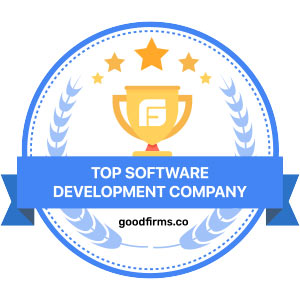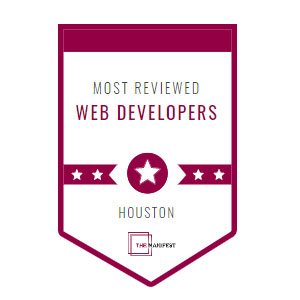Leveraging Web Portal Development to Drive Business Growth: Proven Strategies for Executives
A well-designed and fully functional web portal can streamline your processes, engage your customers, and ultimately lead to increased revenue.
Don’t feel like reading? Listen to our guide as a podcast, powered by NotebookLM technology.
In the digital age, where business dynamics shift swiftly, staying ahead is a must. It’s not just about survival but growth and progress. A vital tool in your business growth toolbox is web portal development. A well-built web portal streamlines your operations, boosts customer engagement, and can catalyze revenue growth. This guide will share key strategies to consider when investing in web portal development for impactful business growth.
01
Chapter 01
Understanding the Basics of Web Portal Development
Web portal development is all about designing a unified platform rich with diverse content and services. Imagine a digital concierge that’s intuitive, personalized, and user-friendly. This platform serves as a single touchpoint for an array of information, resources, and applications.
The goal of a well-crafted web portal goes beyond just being an information hub. It’s about anticipating user needs, delivering timely information, and promoting efficient communication and collaboration. It’s about creating a dynamic, evolving space that seamlessly adapts to your users’ needs. A well-designed web portal transforms the user experience, making it engaging and efficient at the same time.
At the heart of web portal development lies the understanding of the user’s needs and business objectives. The development process begins with gathering requirements and understanding the portal’s purpose, target audience, and desired functionalities. This could range from integrating multiple data sources and applications to providing personalized content and facilitating secure transactions. The objective is to create a portal that not only meets the current needs of the users but is also scalable and flexible enough to accommodate future growth and changes.
Technical considerations also play a crucial role in web portal development. Depending on the portal’s complexity, you might need to consider aspects like data integration, security measures, user interface design, search capabilities, and mobile responsiveness. Also, it’s essential to choose the right technology stack that aligns with your portal’s requirements and future scalability needs. Remember, developing a web portal is a substantial investment, and it requires meticulous planning, a user-centric approach, and the right technology to ensure its success and longevity.

Different Types Of Web Portals
There are several types of web portals, each catering to a different aspect of your business:
Customer Web Portals: Enhancing Customer Experiences
Customer web portals are precisely tailored platforms designed to elevate customer engagement. They do this by providing personalized content, seamless self-service options, and effortless access to crucial information. These portals act as catalysts for boosting customer satisfaction and loyalty, forming a direct path to increased sales and revenue growth.
Employee Web Portals: Fostering Workplace Collaboration
Employee web portals are designed to foster productivity and spark synergistic collaboration by offering essential tools, resources, and communication channels all in one place. These portals are more than just functional spaces—they’re catalysts for innovation, shaping a vibrant company culture rooted in shared goals and mutual support.
Vendor Web Portals: Streamlining Supply Chain Interactions
Vendor web portals function as critical links connecting businesses with their vendors, thereby streamlining complex supply chain interactions. These portals empower vendors with the ability to submit quotes, process orders, track deliveries, and manage invoices, thereby optimizing the entire procurement cycle. By enhancing communication and promoting transparency, these portals nurture stronger vendor relationships, ensuring operations run like a well-oiled machine.
Community Web Portals: Uniting Like-Minded Individuals
Community web portals serve as a digital meeting ground for members of a particular community or industry. They foster networking, encourage collaboration, and facilitate the sharing of knowledge and resources. These portals become a treasure trove of industry-specific insights, the latest trends, and news, enhancing the sense of unity and collaboration within the community.
Content Web Portals: Your Go-To Source For Information
Content web portals act as a powerhouse of information, offering a variety of content to users. From general audience to niche-specific topics, these portals present articles, blogs, videos, podcasts, and more to keep users engaged and informed. They stand as a reliable source of information, helping users stay tuned to the latest happenings, insights, or trends in their area of interest.
E-commerce Web Portals: Simplifying Your Shopping Experience
An e-commerce web portal is your digital marketplace, simplifying the way businesses sell products or services to customers. These portals streamline the shopping journey, making it easy for customers to explore, choose, and buy products or services. They come equipped with features like product catalogs, shopping carts, payment gateways, and customer reviews, all designed to deliver a hassle-free shopping experience.
Patient Web Portal: Personalized Healthcare at Your Fingertips
Patient web portals revolutionize the way patients interact with their healthcare providers. They offer anytime-access to health data, appointment booking, prescription refills, and more. By creating a direct channel of communication, these portals boost patient involvement, improve the flow of information, and contribute to better healthcare outcomes.
eLearning Web Portal: Redefining Learning Experiences
eLearning web portals act as a digital classroom, providing a host of educational content and learning tools. They offer an array of resources like online courses, webinars, educational games, and more, empowering learners to study at their convenience. These portals also foster interaction between learners and educators, making remote learning more engaging and fruitful.
Identifying the Need for Web Portal Development
Embarking on a web portal development project starts with understanding your company’s unique needs and challenges. This step will help you determine how a web portal can best serve your business. Consider the following questions:
- What challenges is your company currently facing?
- How can a web portal help address these challenges?
- What are your business goals, and how can a web portal support them?
This groundwork shapes your web portal project, guiding your decisions on its features, design, functionalities, and more
The Cost Of Web Portal Development
The cost of web portal development can seem complicated due to various influencing factors like the portal’s complexity, required integrations, chosen technology stack, and the degree of customization. Unpacking these elements can help you gain a clearer view of the potential costs. The portal’s complexity, in particular, largely sways the cost.
A basic portal with simple functionalities will cost less than a sophisticated portal demanding custom features, multiple integrations, and advanced security measures. Additionally, the technology stack chosen can also impact the cost. More advanced or specialized technologies may require higher investment compared to commonly used or open-source solutions.
The level of customization needed can also influence the cost. Custom-designed elements, unique features, or specific integrations tailored to your business can add to the development costs. However, these custom elements are often what make a web portal truly valuable to a business, providing the precise functionality and user experience that aligns with your business goals and user needs.
Finally, it’s essential to view web portal development as a journey, not a destination. The initial development phase is just the beginning of this journey. Ongoing maintenance, regular updates, and potential enhancements are integral parts of the route that contribute to the total cost of ownership. When budgeting for a web portal, think beyond the launch. Envision the portal as a living entity that will grow and evolve with your business. The initial development costs, while significant, are just the first step. Regular attention to ensure its relevance, effectiveness, and longevity is equally vital.
02
Chapter 02
Navigating Your Web Portal Development Journey
Planning and Defining the Scope of Your Web Portal Project
The first phase in your web portal development journey is planning and defining the project’s scope. This step is paramount as it sets the foundation for the entire project. A well-defined scope offers a clear roadmap for the project, ensuring that all team members, from designers and developers to project managers and stakeholders, understand the project’s goals, deliverables, and timeline.
Here are some aspects to consider when defining the scope of your web portal project:
Goals & Objectives
When discussing the project’s goals and objectives, it’s essential to make them SMART – Specific, Measurable, Achievable, Relevant, and Time-bound. For example, an objective could be to increase customer engagement by 30% in the next six months using the web portal. By making your goals SMART, you can ensure they are clear and realistic, increasing the chances of achieving them.
Features & Functionalities
The second aspect to consider when defining the scope is the features and functionalities of your web portal. The features you choose should align with your goals and cater to the needs of your users. These could include user registration, search functionality, personalized content, self-service options, and system integration, among others. Considering your timeline and budget, prioritize the features based on their importance and feasibility.
User Experience & Design
The third aspect to consider is user experience and design. The success of your web portal largely depends on how user-friendly and visually appealing it is. An intuitive design that is easy to navigate can significantly enhance the user experience. Similarly, a responsive design that works seamlessly across different devices and platforms can broaden your user base and increase engagement.
Integration
The fourth aspect to consider is integration. Your web portal should be able to seamlessly integrate with existing systems like your Customer Relationship Management (CRM) system, Enterprise Resource Planning (ERP) system, or e-commerce platform. This integration is crucial for creating a unified user experience and streamlining your operations.
Timeline & Budget
Finally, you need to set realistic timelines and budgets for your project. This is crucial for ensuring resource efficiency and timely project completion. It’s essential to account for possible challenges and delays that may arise during the development process. A contingency plan can help manage such situations without derailing the project.
Overall, planning and defining the scope of your web portal project is a critical first step in your web portal development journey. It sets the direction for the project and provides a roadmap for the team to follow. By paying careful attention to your goals, features, design, integration, timeline, and budget, you can set a solid foundation for a successful web portal project.
Implementing Your Web Portal
With a well-defined scope in place, it’s time for implementation. This involves building the web portal according to the specifications outlined in the project scope.
Here are some key aspects to consider during the implementation phase:
Development Methodology
The first aspect to consider is the development methodology that best suits your project’s requirements. Different methodologies have their unique strengths and weaknesses, and the choice you make can significantly impact the project’s outcome. For example, agile methodologies allow for more flexibility and adaptability. On the other hand, waterfall methodologies are more structured and sequential, with each phase building upon the previous one.
Evaluate the nature of your project, its complexity, and the level of collaboration required to choose the most appropriate development methodology.
Coding Standards
The second aspect to consider is the adherence to coding standards and best practices by your development team. Following industry-accepted coding standards ensures that your web portal is robust, secure, and maintainable. Additionally, adhering to best practices can help minimize potential issues, such as performance bottlenecks or security vulnerabilities, and facilitate easier debugging and maintenance in the future.
Testing
The third aspect to consider during the implementation phase is regular testing. Testing is a vital component of web portal development, as it helps identify and fix issues before they escalate or impact the end users. Your testing strategy should encompass various types of testing, including functional, usability, performance, and security testing. Implementing automated testing tools can help streamline the testing process, reducing the likelihood of human errors and speeding up the overall development timeline.
Quality Assurance
The final aspect to consider is the implementation of QA processes. This is crucial in ensuring that your web portal meets your standards and delivers the desired user experience. QA can include code review, user acceptance testing, and compliance with industry standards and regulations. By implementing thorough QA processes, you can ensure that your web portal is reliable, secure, and fully functional, meeting the expectations of your users and stakeholders.

Launching Your Web Portal
Once your web portal is fully developed and thoroughly tested, it’s time to initiate the launch process. The following steps will help you ensure a smooth and effective launch:
Pre-Launch Checks
This initial step is your last line of defense, ensuring all the effort put into developing your web portal pays off. Conduct a comprehensive final check to confirm every feature is functioning as expected. This process involves rigorously testing all aspects of the portal, from user interface elements to back-end functionality.
Still, within this phase, another crucial aspect that requires your attention is load testing. This process is designed to ensure your portal can handle the expected influx of users without performance hiccups. By accurately estimating the anticipated user load and testing the portal under these conditions, you can preemptively address any potential bottlenecks, ensuring a smooth experience from day one.
User Training
As you move onto this step, your focus should be on empowering your users. Equip them with the knowledge and tools they need to use the portal effectively. This could be done through detailed user guides that walk them through the different features and functionalities of the portal.
In addition to these guides, consider holding live training sessions or creating interactive online tutorials. These can provide users with hands-on experience, which can be invaluable in helping them feel comfortable and confident in using the new system. Remember, the more adept users are at navigating your portal, the more engaged they will be, contributing to a more dynamic and useful platform.
Marketing & Promotion
Once the portal is ready and users are trained, it’s time to raise awareness. Begin by crafting a robust marketing plan specifically designed to reach your target audience. This plan could include a blend of different strategies, such as social media promotion, email marketing campaigns, or SEO tactics to increase your portal’s online visibility.
In the second part of this phase, it’s essential to remember that effective marketing isn’t just about casting a wide net; it’s about attracting the right users. By focusing on your target audience and understanding their needs and interests, you can tailor your promotional activities to draw in those most likely to find value in your portal, thereby increasing the chances of a successful launch.
Launch
Now comes the moment of truth – the launch of your web portal. This step involves unveiling your platform to the public and closely monitoring its performance. It’s crucial to be prepared to handle any unexpected issues or bugs post-launch swiftly.
However, the launch is not the finish line; it’s the starting gate. The path to long-term success requires continuous improvement, updates, and user support. In the post-launch phase, it’s crucial to remain engaged with your user base, solicit feedback, and make necessary enhancements to ensure your web portal continues to serve your audience effectively and drive business growth.
Measuring the Success of Your Web Portal
Once your portal is live, it’s crucial to measure its performance. Use a mix of qualitative and quantitative methods for a complete view of your portal’s performance:
User Feedback
Measuring the success of your web portal begins with understanding your users’ experiences. Regularly collecting and analyzing user feedback provides invaluable insights into the strengths and weaknesses of your portal. This feedback can be sourced through various methods, such as surveys, feedback forms, or even direct communication channels.
Furthermore, it’s not just about gathering feedback; it’s about acting on it. By addressing the areas that users feel need improvement and enhancing the aspects they love, you can ensure your portal continually evolves to meet their needs. User feedback can also shed light on new features or services your users might desire, enabling you to stay ahead of their expectations and keep your portal relevant.
Analytics
Beyond the invaluable insights from qualitative feedback, harnessing quantitative data becomes a pivotal part of assessing your portal’s effectiveness. Web analytics tools can serve as your compass, guiding you through a wealth of information related to user behavior and engagement on your portal. Key metrics such as unique visitors, bounce rate, page views, average session duration, and conversion rate form the backbone of your portal’s performance assessment.
Each of these metrics paints a detailed picture of user interaction with your portal. For instance, a high bounce rate might be a signal that users are not discovering what they need or expect. Similarly, a low average session duration could point towards less-than-engaging content. It’s through the continuous monitoring and analysis of these metrics that you can spot patterns, identify potential bottlenecks, and make informed decisions to fine-tune your portal’s performance. This data-driven approach becomes your ally in the constant endeavor to optimize your portal’s user experience and overall effectiveness.
ROI
While user experience is paramount, it’s also vital to assess your portal’s impact on your bottom line. This is where ROI comes in. Calculating your web portal’s ROI involves comparing the costs of development and maintenance against the benefits it provides.
These benefits can be tangible, such as increased sales or cost savings from streamlined processes, or intangible, like improved customer satisfaction or enhanced brand image. An optimal ROI indicates that your web portal isn’t just an expenditure but a profitable investment. Keep in mind that ROI might not be immediate, especially for larger projects. However, by tracking it over time, you can gain a clearer understanding of your portal’s value and its contribution to your business growth.
Maintaining and Updating Your Web Portal
With your portal live, it’s crucial to measure its performance. Use a mix of qualitative and quantitative methods for a complete view of your portal’s performance:
Security Updates
In today’s digital world, the security of your web portal is more than just a consideration—it’s an absolute must. The ever-evolving landscape of cyber threats necessitates a proactive and robust approach to securing your portal. This includes regular updates to your security systems, such as installing the latest patches and keeping third-party plugins or software utilized within your portal up to date.
But fortifying your portal’s security doesn’t stop at updates. Routine security audits play a vital role in identifying potential vulnerabilities and patching them before they can be exploited. This proactive stance on security helps safeguard your users’ data, a critical factor in maintaining their trust and your web portal’s reputation. The integrity of your web portal is a cornerstone of its success, and at its heart, lies a robust and vigilant security strategy.
Content Updates
Your portal’s content plays a pivotal role in user engagement and retention. It’s essential to keep the content fresh and relevant through regular updates. These updates can range from adding new articles or resources to updating existing information to ensure accuracy.
Remember, valuable content isn’t just beneficial for users; it also boosts your SEO efforts, making your portal more visible to potential users. Regularly updating content also signals to search engines that your site is active and relevant, which can positively influence your rankings.
Feature Updates
As your business evolves, your web portal should adapt to reflect these changes. This might involve adding new features or updating existing ones to align with your users’ changing needs and your business goals.
Regularly reviewing your portal’s features and analyzing user feedback can help you identify opportunities for improvement or innovation. Whether it’s adding a new service or improving the user interface, feature updates can enhance the user experience and add value to your portal.
Performance Optimization
The performance of your web portal is a significant factor in user satisfaction. Regularly reviewing and optimizing your portal’s performance can ensure a smooth and enjoyable user experience.
This could involve improving load times, fixing broken links, or enhancing the mobile experience. Remember, a user-friendly portal is more likely to retain users and attract new ones. By continually monitoring and improving performance, you can ensure your portal remains efficient, engaging, and enjoyable to use.
Overall, a successful web portal isn’t a set-and-forget project; it requires ongoing effort and investment. Regularly measuring success, maintaining functionality, updating content, and improving features are all crucial elements. By committing to this continuous improvement process, your web portal will continue to fuel business growth and provide value to your users.
03
Chapter 03
Leveraging Web Portal Development to Drive Business Growth
A well-designed and effective web portal can serve as a catalyst for business growth. It has the potential to create operational efficiencies, enhance user engagement, and open up new avenues for revenue generation. In the digital age, a web portal is not merely an online presence but a strategic tool that can significantly accelerate your business growth. Let’s dive deeper into how a web portal can fuel this growth:
Boosts Customer Service
A well-constructed customer portal is a key tool in enhancing your customer service. This self-service platform empowers customers by giving them easy access to the information they need and an intuitive interface for submitting requests and tracking their progress. It’s a two-way street – customers get a smoother, more satisfactory experience, while your customer service team sees a reduced load of routine queries. The result? Happier customers and a customer service team that can focus on addressing more complex issues, ultimately leading to stronger customer relationships and increased brand loyalty.
Streamline Workflows
An internal web portal serves as a hub for your organization, bringing together collaboration tools, document management, and process automation in one centralized location. This streamlined approach eliminates the confusion that can arise from using disparate systems and enhances communication and productivity. You can achieve significant cost savings by reducing the time and resources spent on managing multiple platforms. Moreover, a more organized and efficient working environment can improve employee job satisfaction and productivity.
Enhance Decision-Making
Integrating your web portal with your business intelligence systems is like giving your leaders a compass for data-driven decisions. They gain on-the-spot access to crucial business data, enabling them to respond quickly to market changes, understand customer behavior deeply, and strategize effectively.
This real-time decision-making ability significantly enhances your business’s adaptability and competitiveness, a critical edge in today’s fast-paced market. When leaders have immediate access to key data, your organization moves from being reactive to proactive. This shift not only fuels growth and innovation but also helps your business become a trailblazer in your industry, setting trends in resilience and strategic thinking.
Broaden Market Reach
A public web portal can be your gateway to a broader audience. It serves as a comprehensive platform where potential customers can discover your products or services, request quotes, or make purchases. This increased visibility can lead to higher customer engagement and possibly increased sales. Furthermore, the platform can be designed to cater to diverse geographic locations and languages, truly globalizing your business and extending your brand’s reach to corners of the world previously untapped.
Generate New Revenue Streams
A web portal is more than just an information hub—it can also be a revenue generator. By offering premium content, advanced functionality, or advertising opportunities, you can open up new avenues for income. This strategy adds another layer of service for your users and bolsters your business’s profitability. As your portal evolves, so too can these revenue-generating features, ensuring your business continues to grow and stay competitive in the ever-changing digital landscape.

04
Chapter 04
Choosing the Right Web Portal Development Partner
Choosing the right web portal development partner is a crucial step that can significantly impact the success of your project. Partnering with an experienced team such as Orases can help ensure that your web portal aligns with your business needs and objectives. Here are four factors to consider when selecting a web portal development partner:
Proven Track Record
Check if the company boasts substantial experience and expertise in web portal development. A glance at their past projects can give you a sense of their technical capabilities, creativity, and problem-solving skills. Is the company experienced in web portal development? Do they have the necessary expertise? This aspect can be assessed by reviewing their portfolio of past projects. This will give you a sense of their technical capabilities, creativity, and problem-solving skills.
It’s not only about how many projects they have undertaken but also about the complexity and diversity of those projects. Have they worked with businesses similar to yours or within your industry? Have they successfully executed large-scale projects or handled challenging assignments? The answers to these questions will help determine whether the company is capable of understanding and meeting your specific needs.
Client Feedback
Client testimonials offer a sneak peek into the company’s work culture, reliability, and customer service. This feedback is a testament to the company’s ability to meet client expectations and deliver on their promises. Look for a company with a trail of happy clients and successful projects.
Industry Insight
A web portal is not a one-size-fits-all solution. Each industry has its unique set of challenges, requirements, and customer expectations. A web portal for a healthcare provider will look starkly different from one for an e-commerce organization. A partner who understands your industry’s unique needs can design a web portal tailor-made for your business. It’s essential to choose a development partner who understands your industry’s unique needs and can design a web portal tailor-made for your business.
Comprehensive Solutions
Look for a company providing holistic solutions, from strategy and design to implementation and ongoing support, ensuring a reliable partner throughout your journey. Web portal development is not just about coding a website. It involves strategy, design, implementation, testing, and ongoing support. Your web portal development partner should be capable of handling all these aspects.
A company providing comprehensive solutions can be a reliable partner throughout your journey, from conceptualization to post-launch support. They can ensure that the web portal remains up-to-date, secure, and aligned with your evolving business needs and market trends. They can also provide training to your team, helping them make the most of the web portal.
Unlock the Power of Your Business with Orases: Your Trusted Partner in Web Portal Development
At Orases, we understand that a well-designed web portal is more than just a functional tool—it’s a strategic asset that can drive your business growth. Our approach to web portal development is not just about building a portal but about empowering businesses to unleash their full potential.


We believe in a partnership that goes beyond a client-provider relationship. We collaborate with you, understanding your unique business objectives, and translating them into a web portal that becomes an extension of your vision. Our dedicated team of experts engages in meticulous planning, defining, designing, and coding to bring your custom web portal to life.
But our commitment doesn’t stop at implementation. We stand by you post-launch, offering continuous support and maintenance, ensuring your web portal adapts to your changing needs and the evolving digital landscape. Additionally, our optimization services are designed to enhance your portal’s performance continually and unlock new growth avenues. With Orases, you’re not just procuring a service; you’re forming a partnership with a team invested in your long-term success.
Contact Orases today online or by calling 301.756.5527 to schedule your no-obligation consultation.








